The clashed ear Maximilian peso, 1866 San Luis Potosí
by Allan Schein
Dramatic dies clashes have always been popular varieties to collect for almost any series of coin. But not every series has produced clashes worthy of great attention. It is well known that the 1866 Maximilian Un Peso produced by Mexico’s San Luis Potosí mint had numerous issues, most notably poor strikes, planchette flaws and a few minor die clashes in the fields. So it really grabbed my attention when I acquired one that was profoundly different, although easy to miss at first glance.
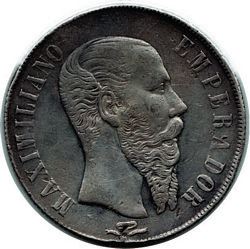
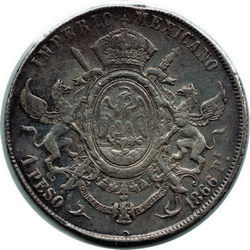
The clash I speak of is in and around the Emperor’s ear. It appears as a series of horizontal parallel bars or lines behind the ear, through the center of the ear, and has a tilted V-shaped impression to the right of the ear. In the center of the ear is a round bottomed depression that is clearly not present on a BU coin. Under magnification, my first thought was “this is a counter-stamp”. But it was quickly apparent that it was a die clash. To the left of the ear is a curving ridge that runs nearly vertically behind the center of the ear.
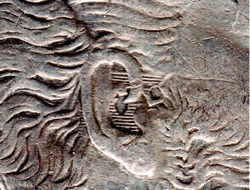
So the search for the source of the clash commenced.
The obverse of this Peso showed not a trace of die clash. But the horizontal lines were apparent in the shield on the coat of arms.
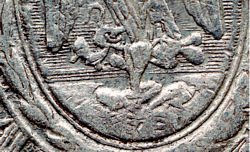
Through the magic of Photoshop, I turned the image 180° and flipped it horizontally.
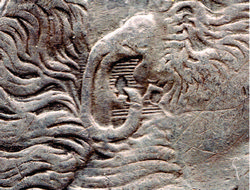
After careful study of hugely enlarged details I was convinced the clash is a transfer of the lower left portion of the shield at cactus level on the left side of the coat of arms. It overlays perfectly, and due to the recesses on the die itself left a unique but clear impression. Specifically, the V-like impression is directly above the lower left cactus paddle, and the round bottom depression in Maximilian’s ear is from the cactus paddle directly to the left of that. Under high magnification, there is no doubt whatsoever. This coin is perhaps at best an Extra Fine example, but the images shown here should leave no doubts as to the source of the clash.
In my curiosity I made inquiry with a number of knowledgeable dealers, but none were familiar with this clash. I examined every coin pictured on the Heritage Auction archives, Stack’s-Bowers archives, Goldberg Auctions, eBay, old auction catalogs and more. There was nothing of the sort to be found. I doubt this to be a one of a kind but until another is brought to my attention it may well be a newly uncovered variety. I believe the term Clashed Ear is accurate and properly descriptive. The entire clash is on the small side, but could not have left a more clear impression.
